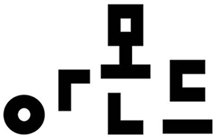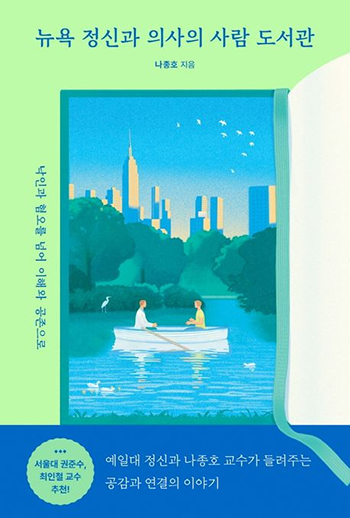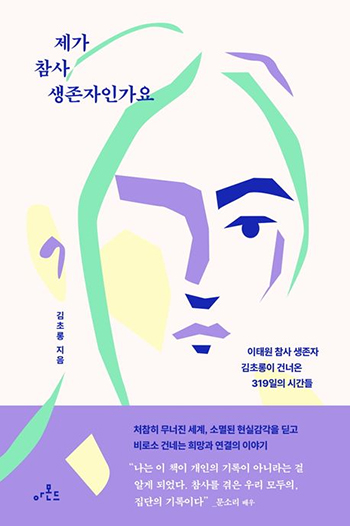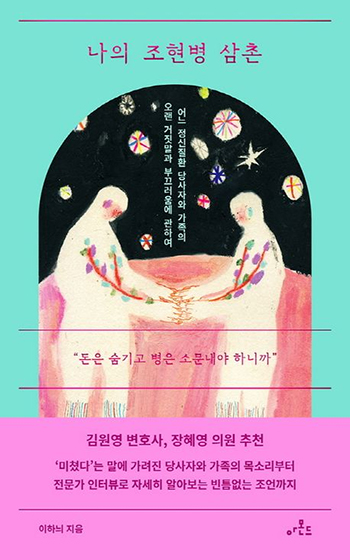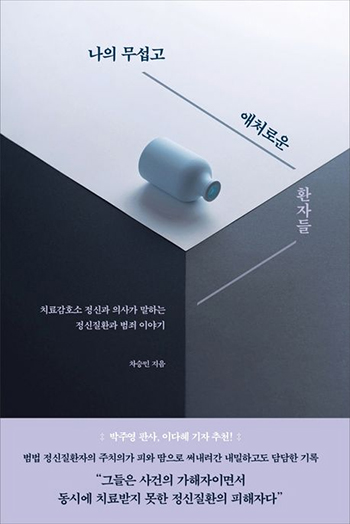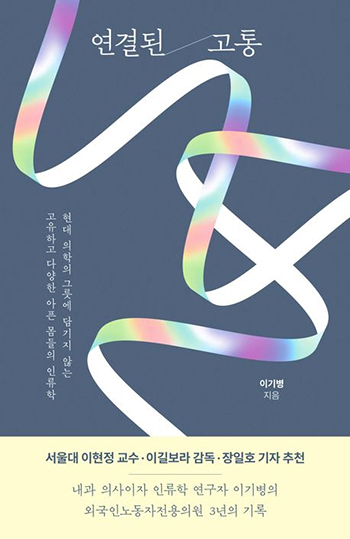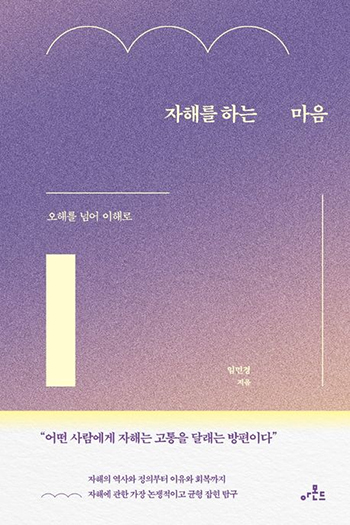|
Korean Publishers
Almond Publishing We make sturdy books with compassionate content
2024.01.02
Almonds have a hard nut with a soft, nutty flavor when you bite into it. Just like almonds, there is a publishing company that approaches readers with a strong but gentle gaze. Almond Publishing is a one-man publishing company specializing in the field of humanities and psychology. Founded in 2021, it has published 16 titles in less than three years. This shows how diligently the company has been running since its foundation. During the short interview with Lee Eun-Jung, the CEO of Almond Publishing, who says that it was fulfilling and joyful to publish psychology books as an editor, we could feel her strong love for the field. CEO Lee Eun-Jung was a dedicated publisher of books addressing the human mind with warmth in her gaze toward both writers and readers. We spoke with Ms. Lee, who has been bringing voices to the world that are often in the shadows but definitely exist somewhere.
Logo of Almond Publishing

It’s a pleasure to have you with us on K-Book Trends. Please introduce Almond Publishing to our international readers along with the meaning of the company’s name.
Almond Publishing is a publisher specializing in humanities and psychology. “Almond” is a nickname for the amygdala, the part of the brain that regulates emotions and feelings. It is said to come from the Greek word “almond” because it looks like an almond. This is why I named the publishing house “Almond.” I hoped its books would encompass the human mind, including emotions and feelings.

Was there a particular reason for choosing “psychology” as the specialty?
When I was founding the company, I looked back at my career and asked myself: what books did I have the most fun making? What books have been the most rewarding? I had to think long and hard about it. The reason I focused on “rewarding” and “fun” was because of sustainability. I thought that if it wasn’t rewarding or fun, it wouldn’t be sustainable. Then I realized that the books that I enjoyed working on as an editor at the previous publisher were mostly about psychology.
I find it rewarding and fun to work on psychology books.

Your publishing bio states, “We make books that toughen your heart.” What are some of your signature books that best represent this identity?
This is a very difficult question, because I believe that every book helps strengthen the mind of its readers in its own area. However, if I had to choose one book, I would carefully pick Professor Peter Jongho Na’s A New York Psychiatrist’s Human Library. It is a book by a New York-based psychiatrist who advocates for the breakdown of stigma and hatred towards mental illness, and a move towards understanding and coexistence. Although public perception of mental illness has improved in recent years, there is still a strong prejudice that psychiatric patients are just “crazy people.” This book stresses that mental illness is a thing to be “fought” just like physical illness, while countering the often dismissed topic of suicide, especially in Korean culture (Eastern culture). There are reviews that say that reading this book helped them break down their prejudices against suicide, and I think it is a book that represents Almond Publishing in that it is both heartwarming and firm.
A New York Psychiatrist’s Human Library

You went from working for a large publishing house to founding a one-man publishing company, Almond Publishing. Was there a particular impetus for that?
I didn’t have a specific reason; I just wanted to build my own house. It wasn’t like my prior company life was challenging (it was actually very good). The books were doing well, I had a good relationship with the people I was working with, and it would not have been weird to just stay there and work. But as I reflected on my life, I realized that I had always been a “go for it” kind of person when I was unsure what to do. I was in a very stable situation, but the moment I realized that I wanted to build my own house, I thought, “Oh, this is something I should do, even if I regret it.”

Having experienced both a large publishing house and a one-man publishing company, what are the pros and cons of being a one-man publishing company?
I think I was burdened by the downsides of being a one-man publishing house until 2022. The pressure to do everything by myself - I think that was the biggest weakness. In a large publishing company, the editor only needs to focus on planning and producing books because the tasks are well distributed. You can just concentrate on putting the book together and leave the marketing to the marketers, the business management to the administration, and the production to the production department. However, when it comes to a one-man publishing house, you are pretty much on your own. The scope of your work expands infinitely, and I think it was a period of adjusting to that change until the beginning of last year.
I want to bring to light voices that are in the shadows, but are definitely out there somewhere.

You have published 16 titles since establishing the company in 2021. How have you been able to keep publishing so many books?
Sixteen titles... I’m surprised, too. I made it sound like I was working alone, but I actually have some very valuable partners. I have a great team of editors, designers, and producers that I have been working with for a long time, and without their hard work, I wouldn’t have been able to keep releasing high-quality books as a one-person publisher.

Your most recent book, Am I A Survivor Of The Disaster, marks the first year of the Itaewon tragedy, which was widely reported by foreign media. It depicts the heartbreaking scars of Korean society. How was this book planned and published? Please give us a brief introduction to the book.
Cholong Kim, writer of Am I A Survivor Of The Disaster, was a survivor of the Itaewon tragedy that took the lives of 159 people on October 29, 2022. I was already familiar with Cholong Kim’s story, as it went viral in online communities after the tragedy. It was viewed more than 500,000 times on anonymous forums, and was serialized in the leading daily newspaper, The Hankyoreh, and online newspaper, Oh My News, for more people to read. At the time of the tragedy, the general attitude toward it was, “What’s the fuss? They went out to play and ended up dead.” However, Cholong Kim’s story said, “They didn’t die because they went out to play, but because they were just going about their daily lives,” and “It wasn’t their fault that they went there, but they should have been protected so that they could return home safely wherever they went,” and I think that changed the perspective and resonated with many people.
Am I A Survivor Of The Disaster

As you mentioned, there is a growing awareness of the importance and need for the field of psychology in Korea. Do you have any plans to publish books for teenagers or children to further expand your audience, or what other areas of psychology do you plan to expand into?
I think the young adult and children’s book market runs on a completely different grammar that is not commonly referred to as “psychology.” So, I don’t think I will be able to break into it, but in the very long run, I wish to publish books that solidify the minds of teenagers and children. And while Almond Publishing is in the field of psychology, it makes general books written by experts in the field of psychology and mental health (psychiatry) rather than classical psychology. However, because discussing psychology without mentioning biology (life science, brain science, etc.) was impossible, I am also looking to expand into relevant science books.

Can you tell us about the most impactful sentence from any of your books? Please share an introduction to the book and any message you would like to give readers of Almond Publishing’s books.
“Hide the money, rumor the illness” is a line from My Schizophrenic Uncle. It was also used as the tagline for the book. What I would like to point out is that this quote does not apply to mental illness. I would like to ask why mental illness, especially schizophrenia, bipolar disorder, and depression, are not included in the category of “illnesses that need to be talked about.” The book My Schizophrenic Uncle is a story about an uncle who suffered from schizophrenia for 40 years. The writer, Hanee Lee, is not only a family member of a mentally ill person, but also a journalist. While capturing the intense, challenging aspects of having a family member with a mental illness, she also tried to keep the story balanced by interviewing other family members, psychiatrists, and advocates.
My Schizophrenic Uncle

Is there any Almond Publishing book that you would like to share with international readers?
First, I would like to introduce My Scary And Pathetic Patients. The National Forensic Psychiatry Hospital is Korea’s only national institution that houses mentally ill criminals, and although it has been open for more than 30 years, few people know where it is or what it does. Despite having 1,000 beds, the largest in the country for a single institution, there were only five psychiatrists working full-time, including the writer. That is nearly 170 patients per doctor. My Scary And Pathetic Patients is a book written by Dr. Seungmin Cha, a psychiatrist who has been working at the hospital for four years. It is the first book to tell the full story of what goes on inside the hospital, a story that has never been properly disclosed until now.
My Scary And Pathetic Patients
The second is The Connected Suffering, an account of Dr. Kibyung Lee’s three years as an internal physician and anthropological researcher working at a medical center for foreign workers. In an era of dichotomies that divide between health and unhealth, body and mind, life and death, and me and you, this book interprets and reconstructs sick bodies that cannot be put into a single medical category through an anthropological lens. As we confront the faces in this book, questions naturally arise - What is the ability to listen to the body? Are body and mind, life and death, completely separable? Are illness and death solely the responsibility of an individual? What is care, and is good care possible? These are profound questions that cannot be taken lightly, and this book does not provide clear answers. Instead, it invites the audience to imagine and investigate new possibilities.
The Connected Suffering
The last book I would like to introduce is The Mind Behind Self-Harm. It is a general liberal arts book that delves into self-harm, a topic that has been consumed by inflammatory articles and is only covered in the academic realm. The writer, Lim Min-Kyung, is a clinical psychologist who studies self-harm and a “former self-harmer.” In the book, she carefully reveals her experiences, thoughts, and feelings from the perspective of a self-harmer, while maintaining a scientific and objectivist perspective as a researcher, meticulously reviewing domestic and international research papers and historical literature. The book also includes interviews with ten people who are currently self-harming or who have self-harmed in the past but have recently stopped, as she wanted to capture the true feelings of more self-harmers beyond her own limited experience. She also interviewed a teacher who works as a counselor in a school. This is why the book is able to maintain a “balanced” view without simply making emotional appeals to understand self-injury, or objectifying the self-injurer as an observer.
The Mind Behind Self-Harm

We look forward to seeing what the future holds for Almond Publishing as it makes books that strengthen the mind. Do you have any plans for a new book or future goals?
I’m working on a memoir by a person with anorexia and a journalist. I’m also preparing a book that analyzes what emotions ordinary tragedies leave us with, and what emotional ebbs and flows they create, through the eyes of anthropologists. I really appreciate your anticipation of what’s to come, but for now, my goal is to make each and every book this year with all my heart, but with hope, “Please, help Almond Publishing survive.” (laughs)
#Almond#One-man publishing#Psychology#Mental health |
Pre Megazine
-

Jakkajungsin Publishing Co.
VOL.69
2024.04 -

Writer Yun Jung-Eun
VOL.69
2024.04 -

Jumping Books Publishing House
VOL.68
2024.03 -

Writer Kim Hwa-Jin
VOL.68
2024.03 -

Publisher Hyohyung
VOL.67
2024.02 -

Writer Minha
VOL.67
2024.02 -

Almond Publishing
VOL.66
2024.01 -

Writer Kwon Jung-Min
VOL.66
2024.01 -

Hakgojae Publishers
VOL.65
2023.12 -

Writer Kim Hye-Jung
VOL.65
2023.12 -

Eidos Publishing House
VOL.64
2023.11 -

Writer Hwang In-Chan
VOL.64
2023.11 -

Munhakdongne
VOL.63
2023.10 -

Writer Chang Kang-myoung
VOL.63
2023.10 -

Happywell Publishing
VOL.62
2023.09 -

Writer Baik Soulinne
VOL.62
2023.09 -

Dasan Contents Group (Dasan Books)
VOL.61
2023.08 -

Writer Lim Kyoung-Sun
VOL.61
2023.08 -

SpringSunshine Publishing Co.
VOL.60
2023.07 -

Writer Lee Kyung-Hye
VOL.60
2023.07 -

Human Cube
VOL.59
2023.06 -

Doctor Jeong Jae-Seung
VOL.59
2023.06 -

Anonbooks
VOL.58
2023.05 -

Writer Son Bo-Mi
VOL.58
2023.05 -

Namhaebomnal
VOL.57
2023.04 -

Writer Kim Bo-Young
VOL.57
2023.04 -

Hugo Publishing
VOL.56
2023.03 -

Writer Cho Kwang-Hee
VOL.56
2023.03 -

Balgeunmirae Publishing Co.
VOL.55
2023.02 -

Writer Lee Byung-Ryul
VOL.55
2023.02 -

Wisdom House, Inc
VOL.54
2023.01 -

Writer Jeong Jia
VOL.54
2023.01 -

Humanitas
VOL.53
2022.12 -

Writer Kim Yeon-Su
VOL.53
2022.12 -

Songsongbooks
VOL.52
2022.11 -

Writer Eun Hee-Kyung
VOL.52
2022.11 -

Bombom Publishing Co.
VOL.51
2022.10 -

Writer Jiwon Yu
VOL.51
2022.10 -

Hangilsa Publishing Co., Ltd.
VOL.50
2022.09 -

Writer Kim Won-Young
VOL.50
2022.09 -

Moksu Publishing Company
VOL.49
2022.08 -

Writer Yoo Sun-Kyong
VOL.49
2022.08 -

Next Wave
VOL.48
2022.07 -

Writer Park Sang-Young
VOL.48
2022.07 -

A Thousand Hopes
VOL.47
2022.06 -

Writer Bora Chung
VOL.47
2022.06 -

Woongjin ThinkBig
VOL.46
2022.05 -

Dr. Oh Eun-Young
VOL.46
2022.05 -

JECHEOLSO Publishing House
VOL.45
2022.04 -

Writer Jang Ryu-Jin
VOL.45
2022.04 -

Changbi Publishers
VOL.44
2022.03 -

Writer Kim Ho-Yeon
VOL.44
2022.03 -

Mati Books
VOL.43
2022.02 -

Writer Lee Kkoch-Nim
VOL.43
2022.02 -

Picturebook Gongjackso
VOL.42
2022.01 -

Writer Kim Sang-Wook
VOL.42
2022.01 -

Writer So-yeon Park
VOL.42
2022.01 -

Writer Yoo Eun sil
VOL.42
2022.01 -

Kungree Press
VOL.41
2021.12 -

Writer Kim Lily
VOL.41
2021.12 -

Writer Park Yeon-jun
VOL.41
2021.12 -

Writer Yi Hyeon
VOL.41
2021.12 -

A deeper world told through picture books 'Iyagikot Publishing (Story Flower)'
VOL.12
2019.06 -

Author Jeon Min-hee
VOL.12
2019.06 -

Illustrator Kim Hwan-Young
VOL.13
2019.07 -

Travelers sailing through the sea of knowledge - 'Across Publishing Group Inc.'
VOL.13
2019.07 -

Genre Novel Publisher 'Arzak Livres'
VOL.14
2019.08 -

Author Lee Yong-han
VOL.14
2019.08 -

Wookwan Sunim
VOL.15
2019.09 -

East-Asia Publishing
VOL.15
2019.09 -

Author Jo Jung-rae
VOL.16
2019.10 -

EunHaeng NaMu Publishing
VOL.16
2019.10 -

Writer Heo Kyo bum
VOL.40
2021.11 -

Writer Kim So-Young
VOL.40
2021.11 -

Author-illustrator Kim Sang Keun
VOL.40
2021.11 -

ACHIMDAL BOOKS
VOL.40
2021.11 -

Author Kang Gyeong-su
VOL.17
2019.11 -

Moonji Publishing Belongs to the Literary Community
VOL.17
2019.11 -

Author Kim Yun-jeong
VOL.18
2019.12 -

I-Seum
VOL.18
2019.12 -

Kim Cho-Yeop
VOL.19
2020.02 -

Creating a window into the future with books
VOL.19
2020.02 -

Author Serang Chung
VOL.20
2020.03 -

Hey Uhm
VOL.20
2020.03 -

Writer Lim Hong-Tek
VOL.21
2020.04 -

BIR
VOL.21
2020.04 -

Writer Song Mikyoung
VOL.39
2021.10 -

Author-illustrator Kim Dong Su
VOL.39
2021.10 -

Writer Lee Seula
VOL.39
2021.10 -

Tabi Books
VOL.39
2021.10 -

Writer Kim Soo-hyun
VOL.38
2021.09 -

Author-illustrator Lee Myoung Ae
VOL.38
2021.09 -

Writer Hwang Sunmi
VOL.38
2021.09 -

Kidari Publishing Co.
VOL.38
2021.09 -

Writer Sohn Won-Pyung
VOL.22
2020.05 -

Woods of Mind's Books
VOL.22
2020.05 -

Writer Heungeul
VOL.23
2020.06 -

Gloyeon
VOL.23
2020.06 -

Maumsanchaek
VOL.24
2020.07 -

Winners of the 2021 Bologna Ragazzi Award
VOL.37
2021.08 -

Picture book artist Lee Suzy
VOL.37
2021.08 -

Author-illustrator Yi Gee Eun
VOL.37
2021.08 -

Hubble
VOL.37
2021.08 -

Writer Baek Se-Hee
VOL.25
2020.08 -

Bearbooks Inc.
VOL.25
2020.08 -

Author Baek Hee-Na
VOL.26
2020.09 -

Yuksabipyoungsa
VOL.26
2020.09 -

Writer Kang Hwa-Gil
VOL.27
2020.10 -

Kinderland (Bandal)
VOL.27
2020.10 -

Writer Ha wann
VOL.36
2021.07 -

Author-illustrator Myung Soojung
VOL.36
2021.07 -

Writer Jung Yeo-Wool
VOL.36
2021.07 -

Publisher EcoLivres
VOL.36
2021.07 -

Writer Lee Geumi
VOL.28
2020.11 -

Sakyejul
VOL.28
2020.11 -

Writer Kim Keum-Hee
VOL.29
2020.12 -

Geulhangari
VOL.29
2020.12 -

Writer Cheon Seon-Ran
VOL.30
2021.01 -

Hyang Publishing House
VOL.30
2021.01 -

Writer Lee Hee-Young
VOL.31
2021.02 -

Sanzini
VOL.31
2021.02 -

Publisher Prunsoop
VOL.32
2021.03 -

Writer Sim Yun-Kyung
VOL.32
2021.03 -

Hanbit Media
VOL.35
2021.06 -

Hyeonamsa
VOL.33
2021.04 -

Author-illustrator Noh Inkyung
VOL.33
2021.04 -

Writer Cho Won-Jae
VOL.35
2021.06 -

Writer Kim Jung-Mi
VOL.34
2021.05 -

Safehouse Inc.
VOL.34
2021.05



